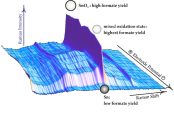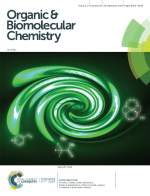
Monitoring the Chemical State of Catalysts for CO2 Electroreduction: An In Operando Study
The paper authored by
A. Dutta, A. Kuzume, M. Rahaman,
S. Vesztergom
and P. Broekmann
is published in ACS Catalysis (2015, vol. 5, pp. 7498–7502).
Abstract:
A major concern of electrocatalysis research is to assess the structural and chemical changes that a catalyst may itself undergo in the course of the catalyzed process. These changes can influence not only the activity of the studied catalyst but also its selectivity toward the formation of a certain product. An illustrative example is the electroreduction of carbon dioxide on tin oxide nanoparticles, where under the operating conditions of the electrolysis (that is, at cathodic potentials), the catalyst undergoes structural changes which, in an extreme case, involve its reduction to metallic tin. This results in a decreased Faradaic efficiency (FE) for the production of formate (HCOO–) that is otherwise the main product of CO2 reduction on SnOx surfaces. In this study, we utilized potential- and time-dependent in operando Raman spectroscopy in order to monitor the oxidation state changes of SnO2 that accompany CO2 reduction. Investigations were carried out at different alkaline pH levels, and a strong correlation between the oxidation state of the surface and the FE of HCOO– formation was found. At moderately cathodic potentials, SnO2 exhibits a high FE for the production of formate, while at very negative potentials the oxide is reduced to metallic Sn, and the efficiency of formate production is significantly decreased. Interestingly, the highest FE of formate production is measured at potentials where SnO2 is thermodynamically unstable; however, its reduction is kinetically hindered.
